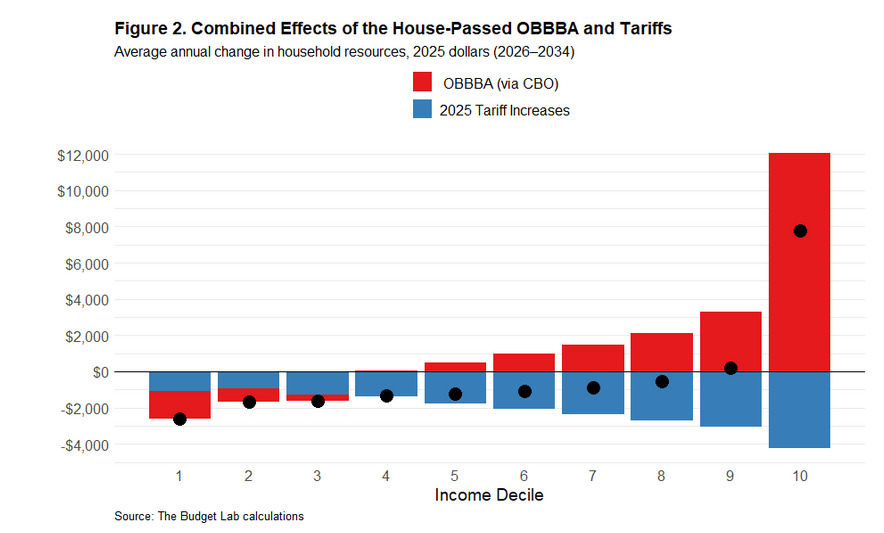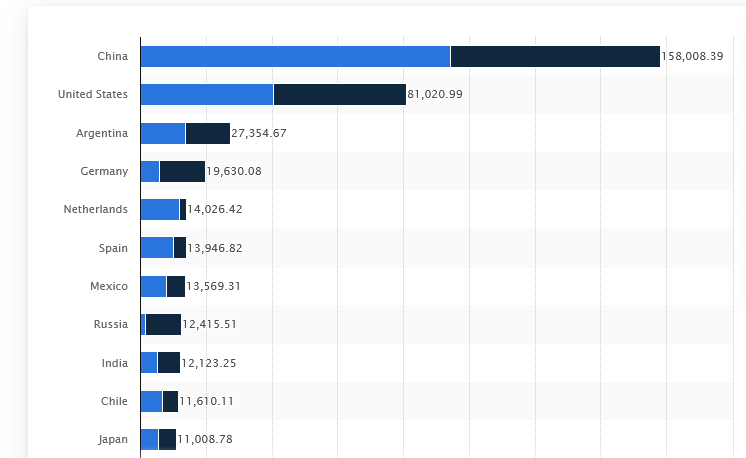First, I want to follow up on this: “I am due to have a conversation with a friend that lives in Denmark tomorrow and I’m going to ask him about energy prices.”
His reply, and I paraphrase as I did not record it or take notes: “if we still had to make our house payment, we would be totally screwed. The amount of money that we pay for energy now is about equal to what our house payment used to be. It’s about five times higher than it normally is, but what’s even worse is the high cost of energy filters out into everything in the Danish economy. A simple item like bread is three times higher than it used to be. Specialty items are three or four times higher than they used to be. Fish from fisherman that we go to the docks to buy from because we live on an island is four times more expensive because they’re paying four times more for the energy they’re using to go out and fish. It’s brutal and it’s all because the United States or somebody allied with it blew up the Nord stream pipeline. I try to keep my mouth shut about this because most people have drank the Kool-Aid, but I really hope Russia wins because I’m sick of all this global elite bullshit.”
These words were spoken by a well educated American married to a Dane with two teen-aged Danish children. If the Danish economy is suffering like this Germany must be fucked.
Where does Europe get its energy now? From the US, now exporting LNG (liquid natural gas) to Europe for 4x the price of Russian and Turkmen natural gas. Here is my question as a Texan: why haven’t natural gas prices risen in tandem with the export of the commodity? People I have asked who recieve natural gas royalties are pissed because there is no price increase pass through. So, owners of the wells are getting screwed and so are the buyers of the product. Welcome to Oligarchical America.
Next I want to address a handful of commenters in my post, best reprersented by Mark Level. He writes, in a very gracious and polite comment that he takes issue with my outline of American Grand Strategy. He notes, “This insane hobby-horse (or idee fixe, choose your metaphor) dates back far more than 120 years, probably 3x that long, and originates in British Colonial phobias about Russia and “the East” generally. Halford John Mackinder developed this lunacy & published it almost exactly 120 years ago, but it had a long pre-natal development among arrogant Imperial gits in Asia. (Gits and twits, upper-class British twits, like the Monty Python sketch.) See here, and the delightful childish fantasy of being Alexander Magnus from this Mackinder thought bubble . . . .”
Please note, first and foremost, I used the word hostile power or hostile coalition. Hostile being the primary variable.
I’ve read Mackinder’s works. Anyone who has traveled across the Silk Road pretty much has to read them. His idea is not necessarily original. It’s more a fusion of ideas that came out of the late 18th century and 19th century Western European dominance of the world that began, as I previously mentioned, with the defeat of Venice in 1509, Portugal’s conquest of a Spice Empire, and its desrtuction of the Ottoman Navy in the Indian Ocean, thus having no rivals, and of course Spain’s rapacious theft of New World gold and silver.
During the 17th and 18th century, a new idea developed with the growth of the British Navy, who outstripped the Dutch and pretty much took over their empire. New York City was, after all, New Amsterdam. What these developments presaged was an idea that centered around the ascendancy of the Littoral powers over the Continental Empires that had ruled Eurasia for millenia. Gunpowder, boats, better firearms, better steel and in the New World, devastating disease leading to genocide in many cases up and down North and South America. The Littoral is defined by strategists “as those land areas (and their adjacent areas and associated air space) that are susceptible to engagement and influence from the sea.” Thus the emphasis on a strong navy by Alfred Thayer Mahan who proved just how dominant Littoral Powers could be. For a time, that is, only for a time, as I see it.
Add to this ascendancy the wars of the Western European powers of the United Kingdom, Spain, France, and the Holy Roman Empire primarily fought during the 18th century for two strategic reasons, primarily by two very different nations with very different vital national interests at stake.
One, was the United Kingdom’s insistence that no power could dominate the Low Lands of the Netherlands and later Belgium because if they could, it would threaten an invasion of the British Isles, plus their massive exports of wool textiles, fueling the nascent industrial revolution. Smart, if ruthless policy.
Second, we must understand France‘s main goal during the wars of this time (and for several centruies prior) was to ensure a divided Germany. So long as the German states were littered into 100 different little principalities France had nothing to worry about. Thus France could go on dominating the continent. The first seismic change to this was the War of the Sixth Coalition which saw for the first time Russia flex its true potential when Russian troops occupied Paris. France’s cataclysm occured not in 1941 but in 1870 with her defeat in the Franco-Prussian war. The result of which was Prussia unifying all of Germany into one empire, adding insult to injury by having the Kaiser crowned in Versailles and taking Alsace Lorraine away as its prize.
Fuse those two strategies together and it is not too far an intellectual leap, considering the Great Game going on at the time between the UK and the Russian Empire, for Mackinder to conjure up his ideas. Were his ideas taken up by the United Kingdom? You bet, but by 1917 when it was clear that the United Kingdom could no longer maintain the balance of power in Europe and the United States had to intervene, (everyone should read AJP Taylor’s magnum opus, The Struggle For Mastery in Europe, to understand the balance of power and its collapse in 1917) US foreign policy intellectuals adopted it. And rightly so.
I think it’s the correct idea. But my reasons for thinking it’s the correct idea are not gonna make many of you happy. You might have to face some hard truths. Oh yeah, I did tell you I was a Realist in the old school manner of the word? In fact there have been a few times when Ian has chastened me pretty seriously for my realism. With that admisssion I will make another one: I don’t mind the criticism from Ian or from others. Ian is probably the smartest person I’ve ever met in my life and I listen to what he has to say. And when I say listen to him, I mean, I consider his words deeply. A man who cannot change his mind will never change anything. Nevertheless, I digress.
Here are my reasons for why I believe the prevention of a single hostile power or coalition of hostile powers from dominating the Eurasian landmass is smart policy. Please, if you take anything away from this sentence, take the meaning hostile.
Number one: the Monroe Doctrine. Oh, I hear you screaming already. But the fact is that if this were not “our” hemisphere, not a one of us would have the standard of living we do today. Our hegemony of the Western Hemisphere is the primary foundation of our wealth and our power. You might not like it. I grimace frequently at the crimes we comitt to protect it. But, the Westphalian System is not built on justice. It is built on the acceptance of international anarchy. Each nation to its own. There is no single sovereign power governing planet Earth. Thus, violence is the supreme authority from which all other authority is derived. Is this a grim Hobbesian outlook? Yes. I don’t like it and I’m pretty sure you don’t either. But as a realist, I take the world as it is, not as I desire it to be. A hostile power or coalition of hostile powers that dominate Eurasia can take that hegemony away. You might not like it but trust me when I say you don’t want that to happen.
Second, a hostile power or coalition of hostile powers that dominate Eurasia can take more than our hegemony away, it/they can invade us. We don’t want that either. Thus we have a powerful navy that projects power to keep Eurasia divided–for the time being, because I think if we get into a war with China, their indirect way of war–read your Sun Tzu–will probably outwit us on the high seas. I’ve spent a great deal of time in China and have a healthy fear of their capabilities. However, my greatest fear is that in our arrogance we will engender the very hostility we must prevent and by our own devices bring about the doom we should seek to avoid. We have lost our edge, our generosity of spirit and our understanding of power. We have become a mean spirited, two-bit, cheap and vulgar people. And sadly, because so many of us are beaten down economically by rich elites who are delusional, we’re going to lose a big war in a painful way. A war that could be avoided, but probably won’t be. I hope I’m wrong, but don’t think I am.
That said, these very wise words, written by Robert D. Kaplan recently, convey the gravity of our present predicament, “There is no prediction. It is only through coming to terms with the past and vividly, realizing the present that we can have premonitions about the future.” Moreover, as a wise woman wrote about history, “the more I study history, the more I learn the art of prophecy.” Deeply contradictory statements, yet both true in their essence.
Are we any more perceptive now about what awaits our planet than were the Russians of 1917, or all of Europe in 1914, and, for that matter, the Germans of the 1920s and the early 30s?
Do we honestly think we know better than they did? With all of our gadgets and our technological triumphalism I bet you there are a handful of you out there that think we do know better than they did. I hate to disappoint you, but we don’t. History is the story of contingency and human agency, not inevtiablity.
So, there it is. Rip me to shreds if you wish. I’ve suffered enough Shakespearean arrows of outrageous fortune in my 54 years to handle it. In fact, I welcome your ideas and if you got this far I’m grateful for your time.
If you’ve read this far, and you’ve read some of my articles and most if not all of Ian’s, then you might wish to Subscribe or donate. Ian has written over 3,500 posts, and the site, and Ian, need the money to keep the shop running. So please, consider it.


 The current plan is 35% tariffs on everything not covered by the USMCA trade deal.
The current plan is 35% tariffs on everything not covered by the USMCA trade deal. So, the Supremes have decided, without even bothering to write an opinion, that the Department of Education can be massively reduced without Congressional approval:
So, the Supremes have decided, without even bothering to write an opinion, that the Department of Education can be massively reduced without Congressional approval:
 How stupid do they think everyone is?
How stupid do they think everyone is?